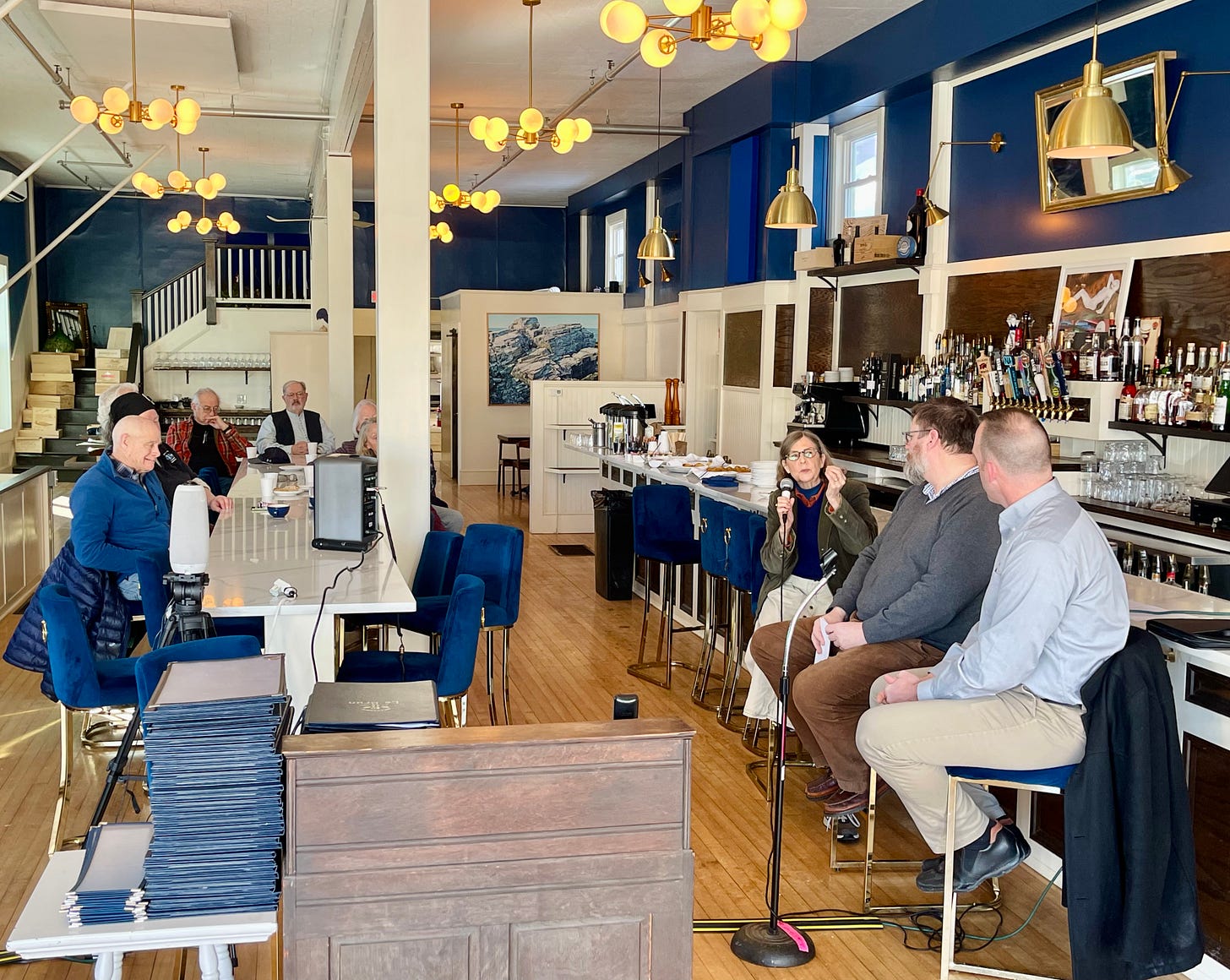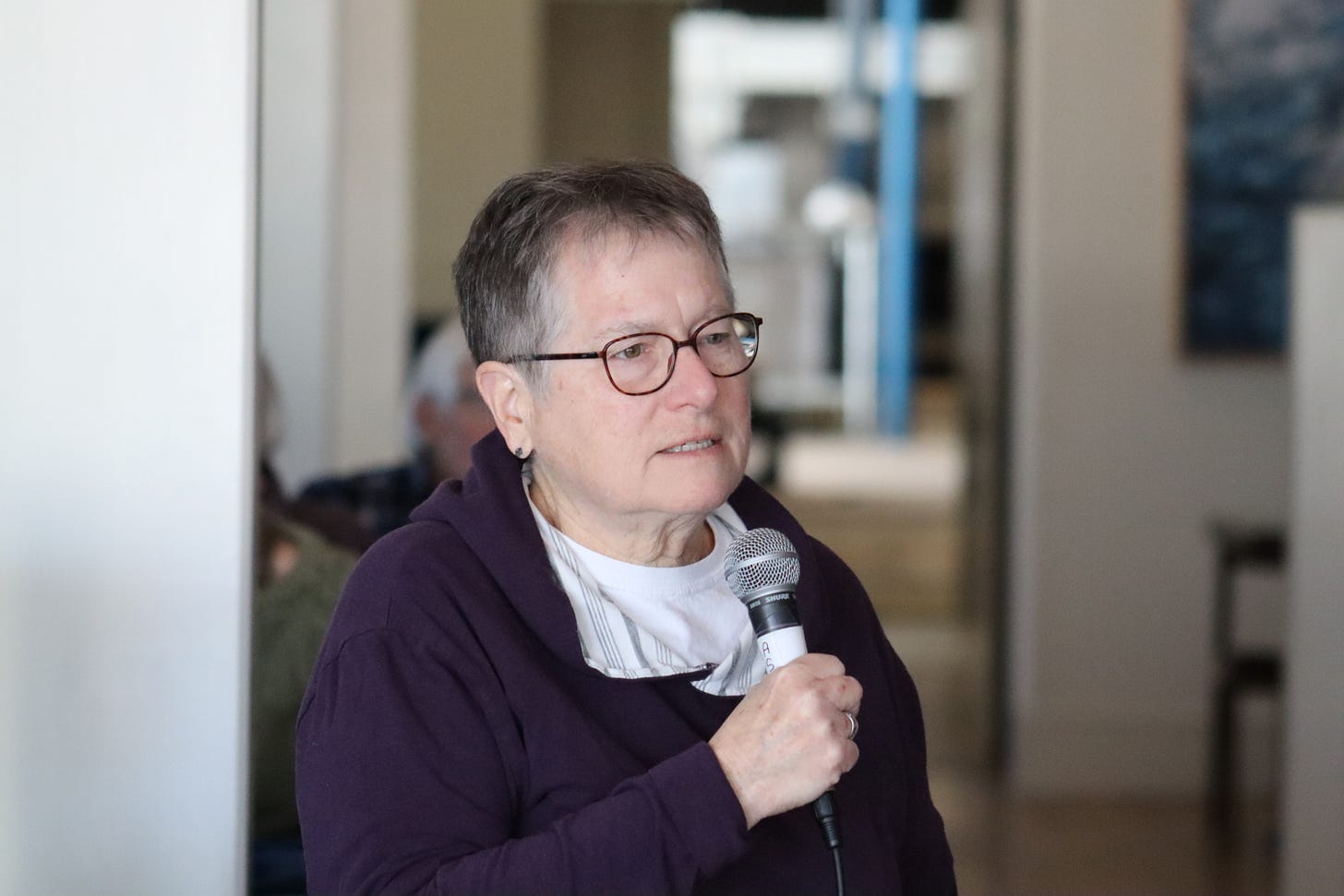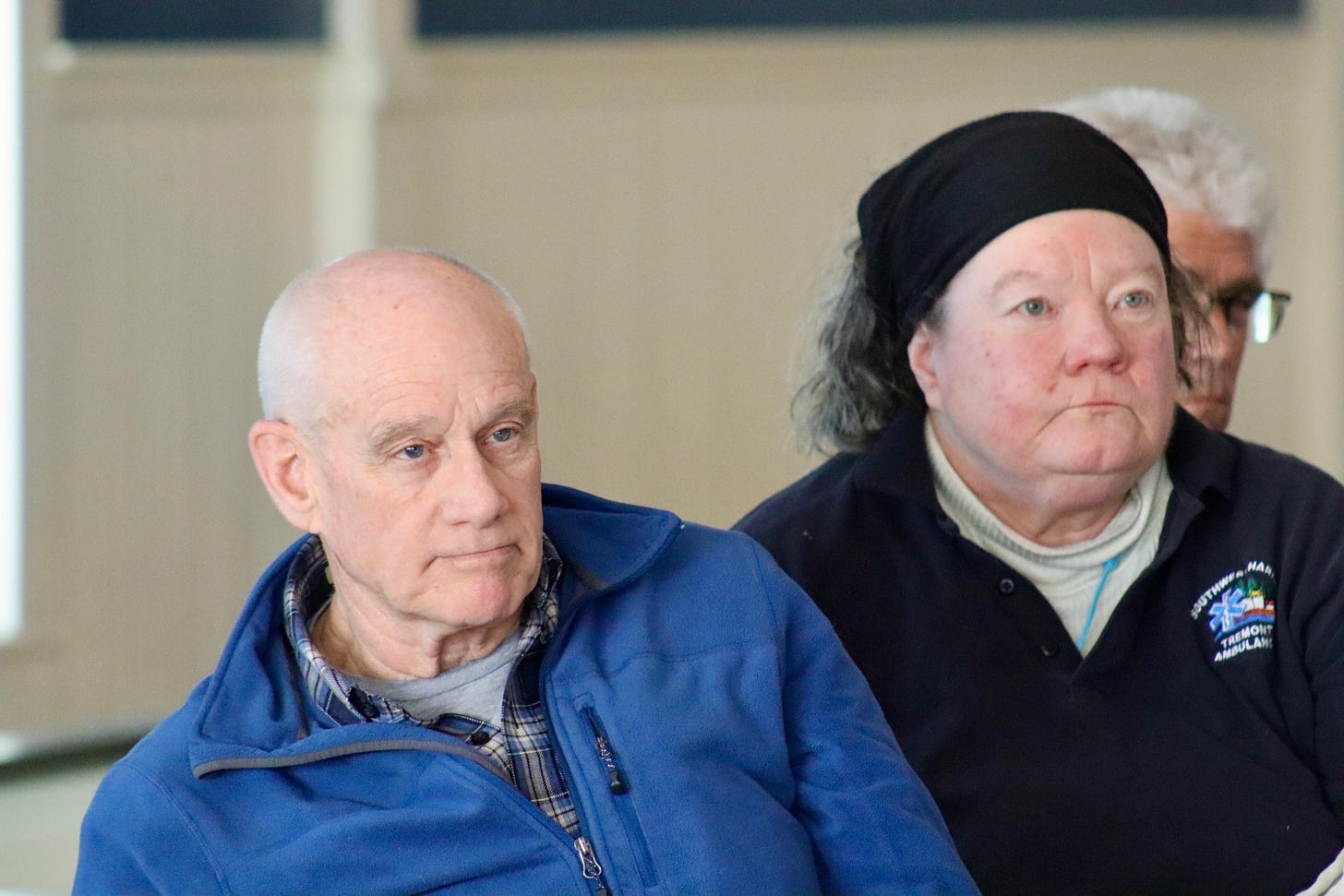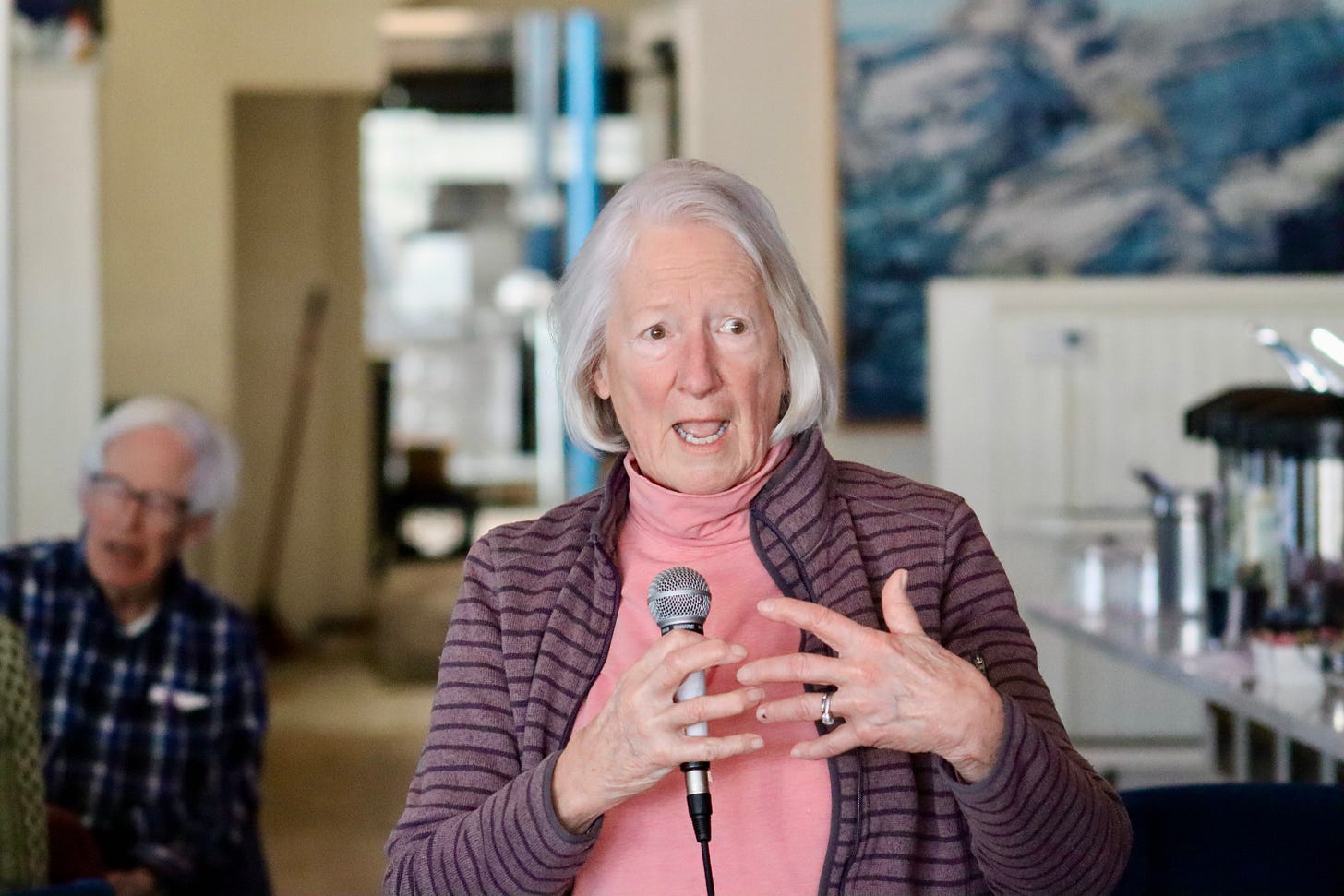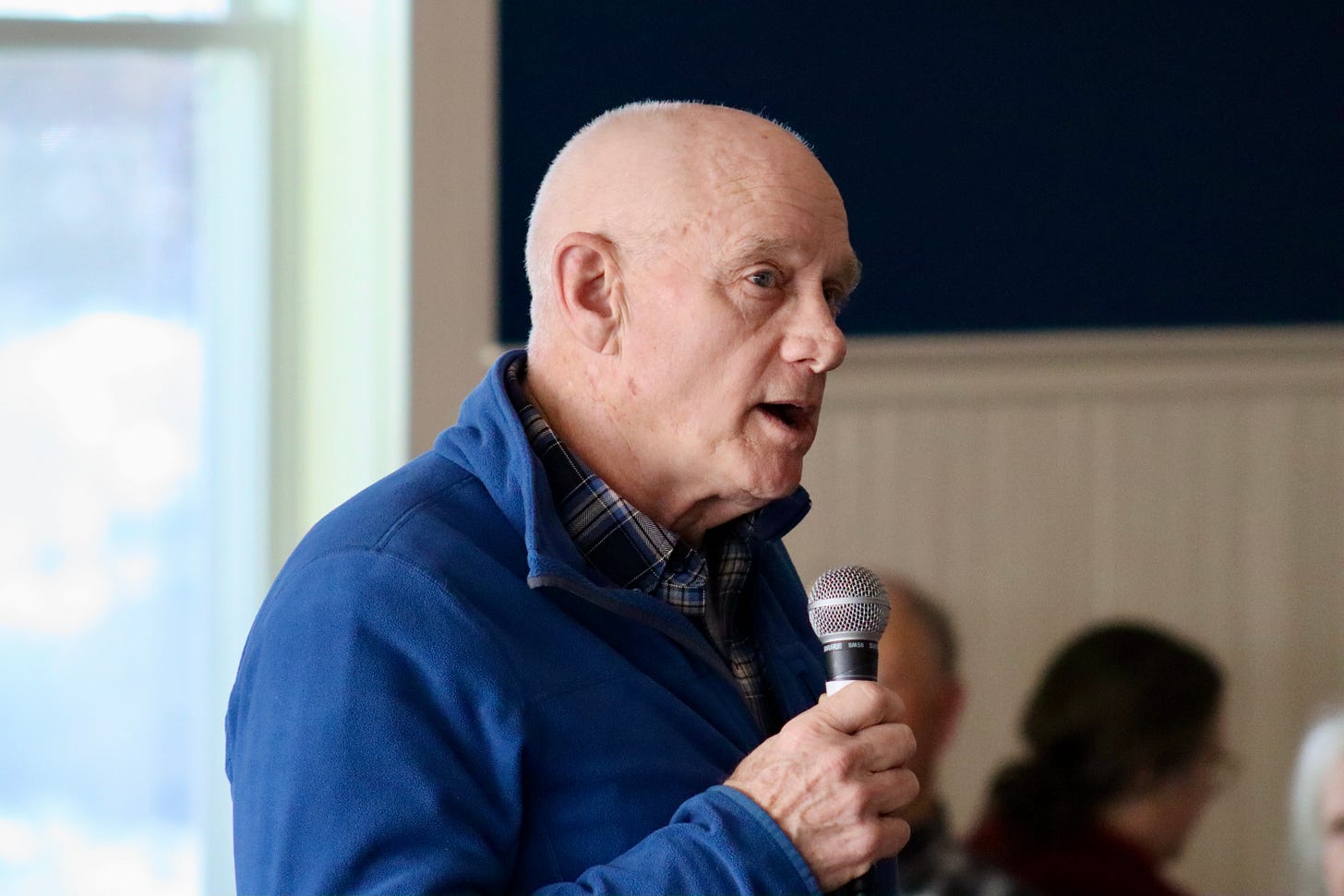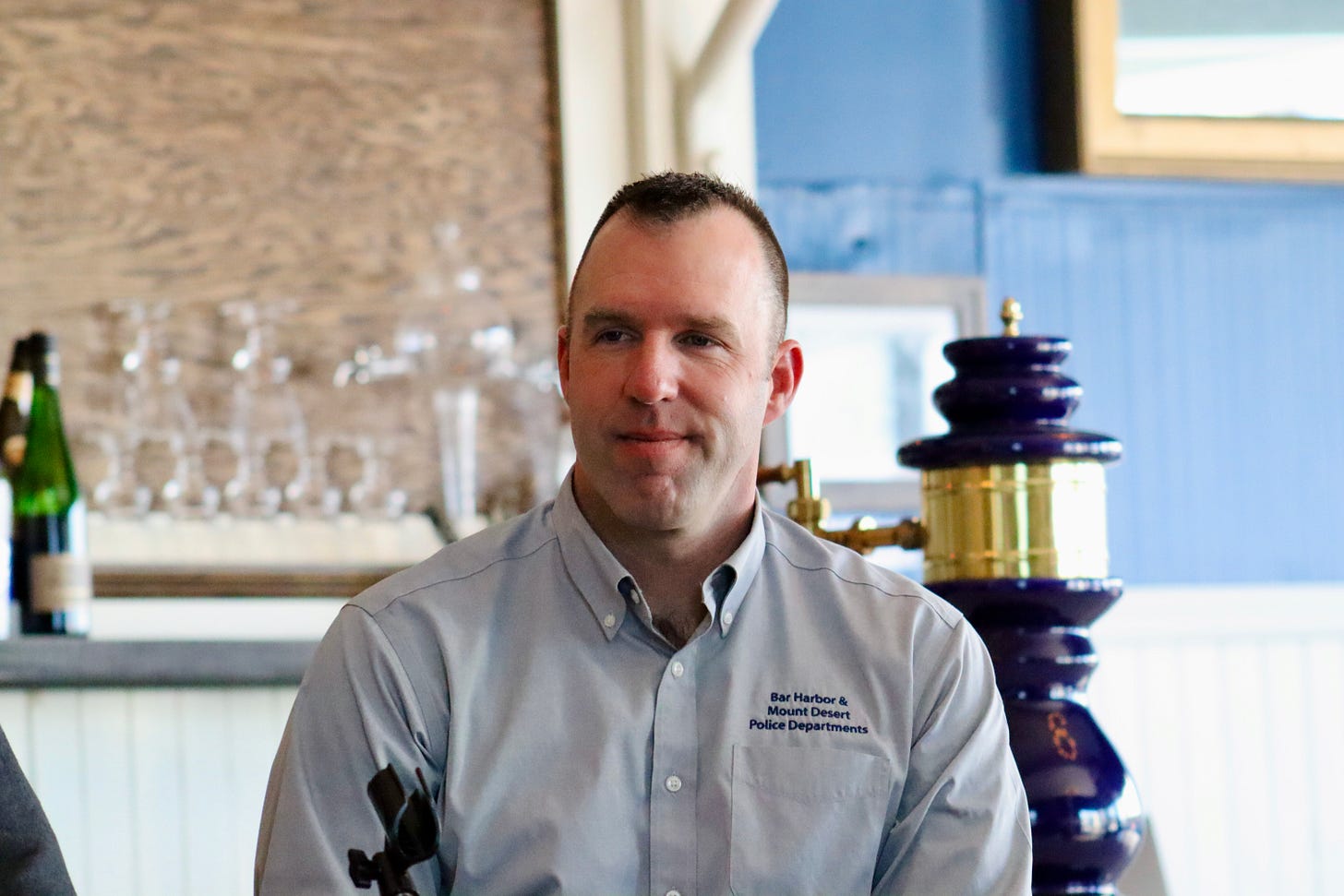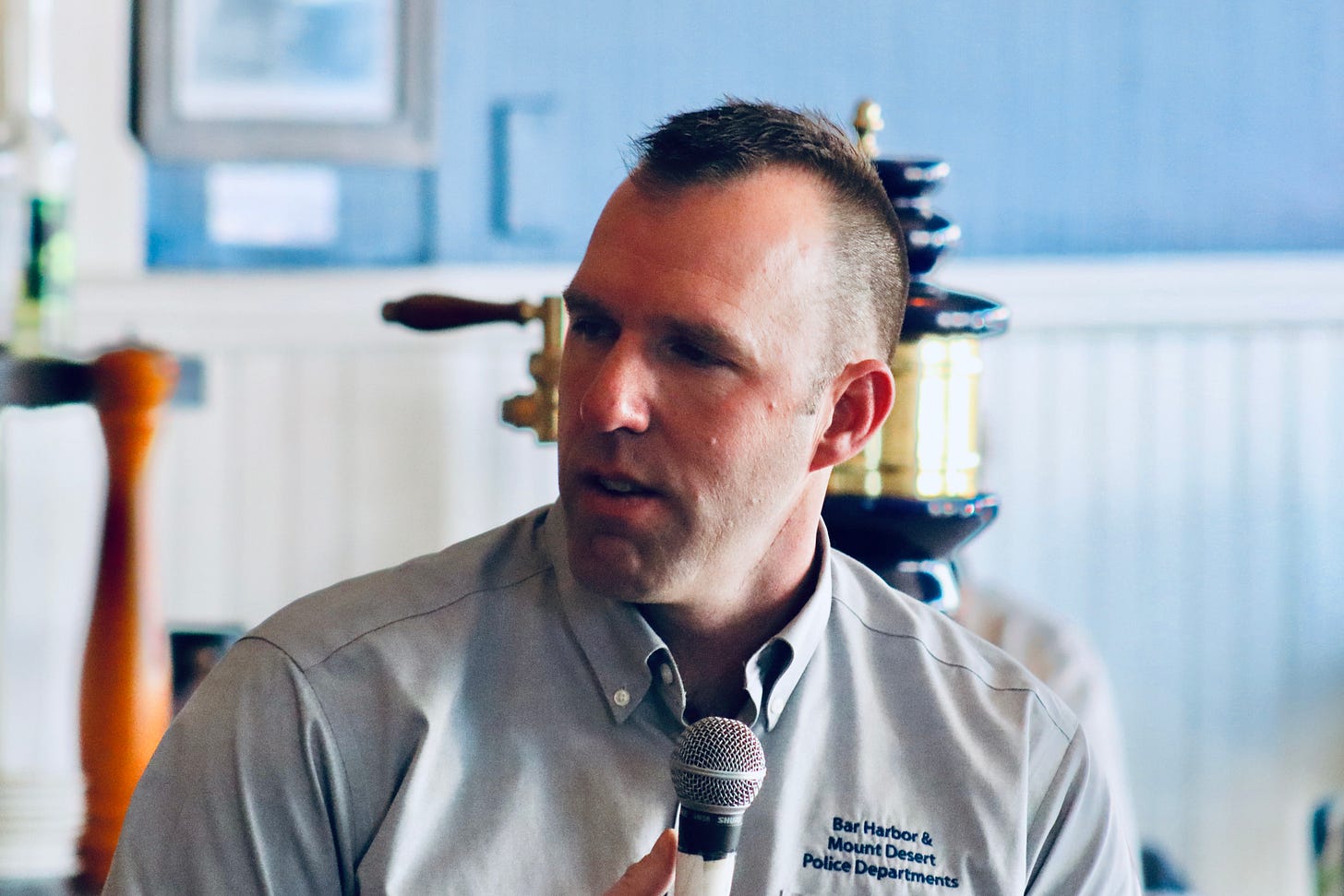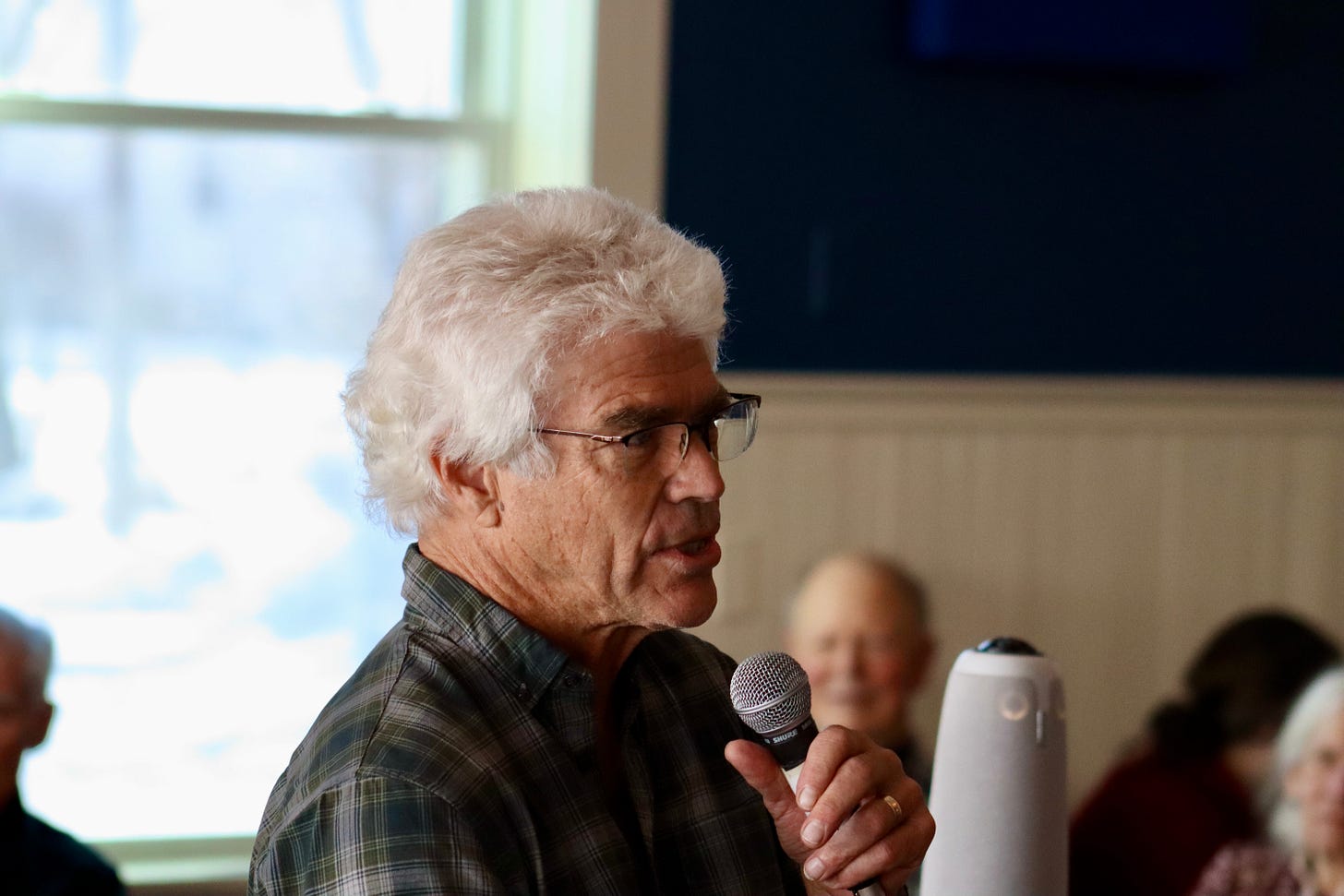Bar Harbor Chief and Town Manager Talk Pros and Cons of Island-Wide Initiatives
The Bar Harbor Story is generously sponsored by Paradis Ace Hardware.
BAR HARBOR—A police chief and a town manager sitting at a bar on Valentine’s Day sounds like the start of a pretty decent joke, and though there were some good-natured laughs, the topic was all business as the Town of Bar Harbor staff members took time to discuss island-wide initiatives with a group of interested participants, Friday.
“Trying to figure out what works best for the area and what meets the need for those local entities,” is key, Bar Harbor Town Manager James Smith said.
Even with the icy sidewalks and slushy roads, well over 25 people attended an Acadia Senior College talk featuring Smith and Bar Harbor and Mount Desert Police Chief David Kerns, at Brasserie LeBrun in Bar Harbor, Valentine’s Day morning.
Despite the setting and the day, the talk wasn’t one of romance, but one of logistics as the two men fielded questions from attendees about the pros and cons of towns across the region consolidating and/or sharing services. The college defines itself on its website as “an educational organization providing intellectual stimulation, practical knowledge, social interaction, and fun primarily for adults over fifty.”
It was the first of the college’s Coffee Clashes this year, though there was no clashing. Both men talked pros and cons. The respectful audience asked questions delving into the history of the police departments working together and sharing some administrators, such as Kerns.
Ruth Eveland (former Jesup Memorial Library director, councilor, and current planning board vice chair) introduced both men and the discussion, beginning with a mention of Mount Desert Island High School.
In 1968, she said, the towns on Mount Desert Island finally created a single high school. It took about 20 years to get the high school in place. In 2013 Bar Harbor and Mount Desert began sharing a police chief—Jim Willis— after Bar Harbor Chief Nate Young was fired by former town manager Dana Reed. Willis was serving as the Mount Desert chief at the time. The towns then shared him as police chief.
That arrangement between the towns, Eveland said, “has evolved over the time with the sharing of staff and resources.” Though it is not a shared department, it is a sharing of resources.
Currently, there are discussions about consolidating the rest of the schools on Mount Desert Island. There are occasional discussions about sharing other administrative resources between towns throughout the island.
“These flames still flicker, I gather,” Eveland said of thoughts to potentially have island-wide or multi-town collaborations. “We are all acutely aware,” she said, that each town can’t provide all the resources it would like.
When many issues, such as housing or transportation, are not town-specific, but island wide, she said those flames flicker a bit more.
The approximately hour-long discussion focused on advantages and disadvantages, mechanics, what would be suitable, and how to develop community support for those endeavors.
Smith quickly laid out both the positives and negatives of sharing services. The positives included efficiencies and cost savings, improved service quality, addressing workforce shortages, and regional approach to common shared issues.
The negatives included loss of local control, loss of local identity, political and logistical challenges, uncertainty for cost savings, and potential to greater bureaucracy.
Kerns spoke to the specifics of the towns sharing staff for the police departments.
“We’ve been doing it now for roughly 13 years,” Kerns said. “In the beginning, it was not designed to go as far as we’ve taken it.”
It has been successful, he said, because of the nature of the island and its geography, but also because of the departments’ staff.
“A lot of it goes down to the individuals we have on staff and their buy-in,” he said, and the staff’s belief in what the department wanted to accomplish. The biggest initial challenges, he said, were financial issues and community buy-in. The departments have two financial budgets: a budget for each town. The cost for Kerns’ position is shared with 60% coming from Bar Harbor’s budget and 40% from Mount Desert’s.
Agreements can be shared services, combined (or consolidated service), and then an operational model of shared services—such as mutual aid agreements—when the event is either too big for one agency to respond to or a department is stretched too thin to respond to an issue.
Bar Harbor and Mount Desert had shared a human resources’ officer, but that staffer left the area. Mount Desert still contracts with him. Bar Harbor chose not to. The towns are currently sharing John Lennon of the Bar Harbor Fire Department, but that agreement will stop in early summer, ended by Bar Harbor for budget reasons. The police departments are looking at being more efficient when it comes to administrative services, Kerns said.
When thinking about sharing services, Smith said, it’s important to listen to all concerns.
“Don’t go too far too fast. You have to be a good listener to the concerns that are expressed,” Smith said and give those concerns legitimacy. “Don’t be dismissive to those concerns. Be sensitive to them.”
Attendees asked what the men saw as the next place where sharing services might be.
“Necessity is the mother of all invention,” Smith said. Sometimes, it’s just crisis or the point of frustration or despair among the people trying to make things work.
Both said that they weren’t coming out in support or against any future sharing of services, but guessed that it would be the schools or the EMS services in Southwest Harbor and Tremont since both those talks have already begun. Kerns added that sharing services often occurs because of what is pressing on a community’s need.
One attendee asked if there was a place for an entity such as the League of Towns to focus on those sharing agreements or potentials and wondered if it still existed.
“The LOT does still exist. Their focus has regionally been housing and transportation issues,” Smith said, but that can be expanded.
Andy Cline spoke to the EMS needs of Southwest Harbor and Tremont and the creation of a committee in those towns to look into possibilities and the future of emergency services in the two towns. “What advice would you give us for this committee to think about?”
“Internal buy-in is huge.” One person, Kerns said, could break it all apart. Community involvement is also important.
Starting the conversation is a really important step. Try to find solutions that mitigate those concerns and addresses them. The problem of staffing, which is impacting the EMS and fire services, is a national issue, Smith said.
“The days of all volunteer forces are all but gone. The volunteers aren’t there,” Smith said. That means paying positions are often necessary. “When you’re a small town, it can be costly to do that.”
Smith said he went through the exercise of looking to shared services 10 years ago with Brewer and Bangor.
“Their primary objective was cost savings,” he said.
They found that they did not have the economies of scale to make it worth it financially. Instead, they found inefficiencies. He suspected the towns on the island would have the same result. There would be more efficient and robust services, but not any true savings.
“You have to go through the exercise. You have to crunch them (sic: the numbers). You have to analyze them,” he said. “I think a lot of communities are looking at this.”
Rural communities, he said, have these challenges from aging populations and small populations and costs.
“You’re the end of the road, so to speak, from the population base,” he said. That impacts recruitment. Then towns have to attract people across geographical lines.
“It seems to me that one of the big problems of this island is turf. People are very protective of their turf,” one woman said. “It takes forever for projects to get ripe around here.” She called the high school a triumph. “But it only took twenty years.”
The audience chuckled.
LINKS TO LEARN MORE
Acadia Senior College’s next event is Art of Penobscot Bay book talk with Carl Little, February 28. To learn more, click here.
Photos by Shaun Farrar/Carrie Jones/Bar Harbor Story
If you’d like to donate to help support us, you can, but no pressure! Just click here (about how you can give) or here (a direct link), which is the same as the button below.
If you’d like to sponsor the Bar Harbor Story, you can! Learn more here.







